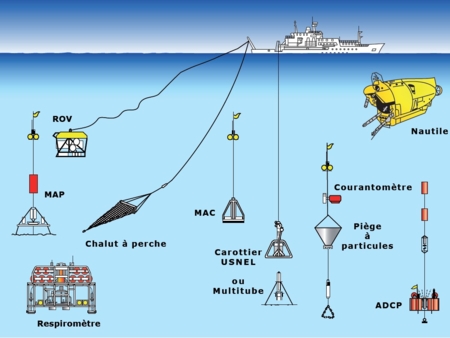Thesis defense of Maurane Réveil
Removal mechanisms of embedded ribonucleotides in archaeal DNA
Please come to Maurane Réveil's defense. It will take place in IUEM, Monday 21st of February, Amphi A at 14:00 pm
ABSTRACT
Ribonucleotides (rNMPs) are the main non-canonical nucleotides into genomic DNA. Embedded rNMPs in DNA can be used as a positive signal. However, if rNMPs are not removed from the DNA they can cause genomic instabilities.
One of the main rNMP incorporation source into DNA are the DNA polymerases of the three domains of life. Our models, the Archaea Pyrococcus abyssi and Thermococcus barophilus possess 2 replicative DNA polymerases belonging to the Bfamily (PolB) and the D-family (PolD). We aimed to study the removal mechanisms of embedded ribonucleotides in DNA. First, we studied the contribution of proofreading exonuclease activity of PolB and PolD on rNMP processing. The results indicate that the 3’-5’ exonuclease activity of PolD is more efficient in editing newly inserted rNMP at terminal primers than PolB. According to our structural data, this difference cannot be accounted by physical constraint of rNMP into the exonuclease active site. We then studied the archaeal Ribonucleotide
Excision Repair (RER) pathway in vitro and in vivo. Our data demontrate that RER pathway is efficient to correct both matched and mismatched rNMP. Both PolB and PolD can be involved in RER, PolB is more efficient for matched rNMP removal whereas PolD seems more efficient to correct mismatched rNMP. We also suggested an alternative RER pathway involving the 5’-3’ exonuclease activity of Fen1. Finally, we determined the intracellular nucleotide concentration of Thermococcus barophilus, Haloferax volcanii and their relative RNase H mutants to assess the effect of RNase HII deletion on the nucleotide pool variation.







